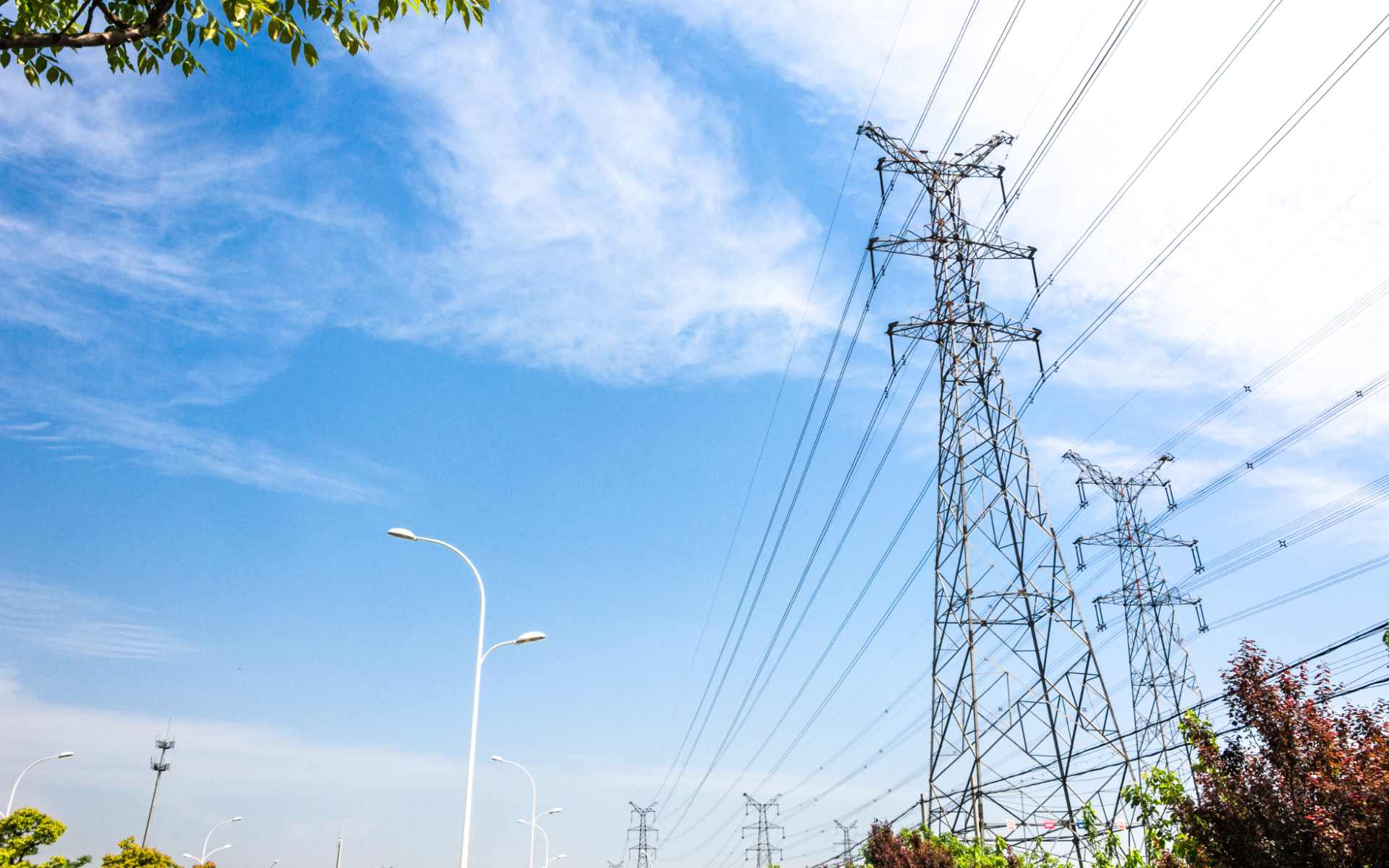Regional Infrastructure Projects Strengthen SAPP Distribution Capacity – Energy Capital & Power

Report on Regional Efforts to Address the Southern African Power Pool (SAPP) Energy Deficit
1.0 Introduction: The Regional Energy Challenge and Sustainable Development Goals
The Southern African Power Pool (SAPP) is currently facing a significant 4,200 MW power deficit, a situation that poses a critical challenge to regional energy security and economic development. In response, market participants, including member countries and financing institutions, are accelerating efforts to expand generation and transmission capacity. These initiatives are directly aligned with several United Nations Sustainable Development Goals (SDGs), primarily:
- SDG 7: Affordable and Clean Energy – Ensuring universal access to affordable, reliable, and modern energy services.
- SDG 9: Industry, Innovation, and Infrastructure – Building resilient infrastructure, promoting inclusive and sustainable industrialization, and fostering innovation.
- SDG 13: Climate Action – Taking urgent action to combat climate change and its impacts, particularly through the integration of renewable energy.
- SDG 17: Partnerships for the Goals – Strengthening the means of implementation and revitalizing the global partnership for sustainable development.
This report outlines the key strategic actions being undertaken by SAPP and its member states to address the power deficit while advancing the 2030 Agenda for Sustainable Development.
2.0 SAPP’s Strategic Initiatives for Enhanced Regional Integration
SAPP is actively fostering collaboration with financing institutions to mobilize capital for critical infrastructure projects. These partnerships are fundamental to achieving SDG 17 and provide the foundation for progress on other energy and infrastructure-related goals.
- The RETRADE SAPP Program: In partnership with the World Bank, this program was approved in November 2025. It aims to mobilize private capital for infrastructure modernization.
- Financing: Provides $12 million in financing and technical assistance.
- SDG Alignment: Directly supports SDG 7 by expanding renewable energy integration and SDG 9 by upgrading transmission infrastructure to be more resilient and efficient.
- SAPP Internal Financing Facility: SAPP has deployed a $20 million financing facility to support transmission and infrastructure projects across its 12 member countries.
- Objective: To strengthen regional power trade and distribution security.
- SDG Alignment: This initiative contributes to building the robust regional infrastructure required by SDG 9, which is a prerequisite for achieving universal energy access as outlined in SDG 7.
3.0 National Contributions to Regional Energy Security and the SDGs
Individual SAPP member countries are implementing national policies and projects that reinforce the regional strategy and contribute significantly to the SDGs.
3.1 Zimbabwe: Market Liberalization for Universal Access
- Policy Reform: In October 2025, Zimbabwe liberalized its electricity market, opening generation, transmission, and distribution to private sector participation.
- Investment Goal: The country aims to attract $9 billion in public and private investments.
- SDG Alignment: This reform is a direct effort to achieve SDG 7.1 (universal access to electricity by 2030) and leverages multi-stakeholder partnerships as envisioned in SDG 17.
3.2 South Africa: Expanding Transmission and Renewable Capacity
- Transmission Development Plan: A R250–R300 billion plan to install 14,000 km of new transmission lines and 120 substations by 2032. This is a monumental undertaking in line with SDG 9 to build resilient infrastructure.
- Renewable Energy Program: The Renewable Energy Independent Power Producer Procurement (REIPPP) program continues to diversify the energy mix. Bid Window 7 alone will add 1,290 MW of solar power.
- Integrated Resource Plan 2025: Targets 105 GW of new capacity by 2039, mobilizing R2.2 trillion in investments.
- SDG Alignment: These initiatives are central to achieving SDG 7.2 (increasing the share of renewable energy) and represent concrete climate action as per SDG 13.
3.3 Mozambique: Leveraging Renewables for Regional Export
- Cross-Border Projects: Mozambique is developing multiple transmission projects to export its hydropower and renewable energy potential.
- Namaacha–Boane Transmission Line: Supported by a $43.6 million loan from the African Development Bank, this line will connect the 120 MW Namaacha Wind Farm to the grid.
- Mozambique-Zambia Interconnector: A $411.5 million project to enhance regional power trade.
- Chimuara–Nacala Transmission Line: A project developed by Gridworks with support from the IFC and DFC to facilitate electricity trading.
- SDG Alignment: These projects exemplify progress towards SDG 7 by increasing the availability of clean energy across the region. The involvement of multiple international finance institutions highlights the importance of SDG 17 in realizing large-scale infrastructure projects under SDG 9.
3.4 Botswana: Strengthening Regional Interconnections
- Major Transmission Upgrades:
- 400 kV Botswana–South Africa Interconnector.
- Pandamatenga–Victoria Falls 330/400 kV line.
- Phase 2 of the North-West Transmission Grid Connection Project.
- SDG Alignment: By strengthening regional interconnectivity, these projects enhance energy security and support the goal of reliable energy for all (SDG 7). They are critical investments in the resilient regional infrastructure targeted by SDG 9, positioning Botswana as a central hub within SAPP.
Analysis of Sustainable Development Goals in the Article
1. Which SDGs are addressed or connected to the issues highlighted in the article?
-
SDG 7: Affordable and Clean Energy
- The entire article focuses on addressing a 4,200 MW power deficit in Southern Africa by expanding electricity generation and transmission. It explicitly mentions Zimbabwe’s goal to achieve “universal access by 2030” and highlights the integration of renewable energy sources like solar in South Africa and hydropower and wind in Mozambique.
-
SDG 9: Industry, Innovation and Infrastructure
- The article details numerous large-scale infrastructure projects aimed at creating reliable and resilient regional energy systems. Examples include South Africa’s plan for “14,000 km of new transmission lines,” Mozambique’s cross-border interconnectors, and Botswana’s transmission upgrades. These projects are fundamental to industrial development and economic connectivity.
-
SDG 17: Partnerships for the Goals
- The article emphasizes multi-stakeholder partnerships. This includes regional cooperation through the Southern African Power Pool (SAPP), partnerships with multilateral finance institutions like the “World Bank,” “African Development Bank,” “International Finance Corporation,” and the “U.S. International Development Finance Corporation,” and public-private investments sought by countries like Zimbabwe.
-
SDG 13: Climate Action
- The focus on expanding renewable energy capacity is a direct climate action. The article mentions South Africa adding “1,290 MW of solar power,” Mozambique developing a “120 MW Namaacha Wind Farm” and exporting hydropower, which are all efforts to transition towards cleaner energy and mitigate climate change.
2. What specific targets under those SDGs can be identified based on the article’s content?
-
Under SDG 7 (Affordable and Clean Energy):
- Target 7.1: By 2030, ensure universal access to affordable, reliable and modern energy services. This is directly addressed by Zimbabwe’s stated goal “to achieve universal access by 2030.”
- Target 7.2: By 2030, increase substantially the share of renewable energy in the global energy mix. This is reflected in South Africa’s procurement of 1,290 MW of solar power and Mozambique’s development of wind and hydropower projects.
- Target 7.a: By 2030, enhance international cooperation to facilitate access to clean energy research and technology… and promote investment in energy infrastructure. The entire SAPP initiative, supported by the World Bank’s RETRADE SAPP program, exemplifies this target by fostering regional cooperation and investment in energy infrastructure.
-
Under SDG 9 (Industry, Innovation and Infrastructure):
- Target 9.1: Develop quality, reliable, sustainable and resilient infrastructure, including regional and transborder infrastructure, to support economic development and human well-being. This is the core theme of the article, evidenced by projects like the “Mozambique-Zambia Interconnector,” the “Botswana–South Africa Interconnector,” and South Africa’s “Transmission Development Plan.”
-
Under SDG 17 (Partnerships for the Goals):
- Target 17.3: Mobilize additional financial resources for developing countries from multiple sources. The article explicitly mentions financing from the World Bank ($12 million), SAPP ($20 million), the African Development Bank ($43.6 million), and efforts by Zimbabwe to attract “$9 billion in public and private investments.”
- Target 17.9: Enhance international support for implementing effective and targeted capacity-building in developing countries. The World Bank’s “Technical Assistance to the SAPP (RETRADE SAPP) program” is a direct example of this, aimed at strengthening the region’s ability to expand its power infrastructure.
3. Are there any indicators mentioned or implied in the article that can be used to measure progress towards the identified targets?
-
For SDG 7 Targets:
- Indicator for Target 7.1: The proportion of the population with access to electricity. Zimbabwe’s goal of “universal access by 2030” implies this metric will be used to track progress.
- Indicator for Target 7.2: Installed capacity of renewable energy. The article provides specific figures that can be used as indicators, such as the “1,290 MW of solar power” in South Africa and the “120 MW Namaacha Wind Farm” in Mozambique.
-
For SDG 9 Targets:
- Indicator for Target 9.1: The length and capacity of new infrastructure. The article provides concrete numbers, such as South Africa’s plan to install “14,000 km of new transmission lines” and “120 substations,” and Botswana’s “400 kV” interconnector.
-
For SDG 17 Targets:
- Indicator for Target 17.3: The total dollar value of financial commitments. The article quantifies this with figures like the “$12 million” from the World Bank, “$20 million” from SAPP, “$43.6 million” from the AfDB, and the “R2.2 trillion” South Africa aims to mobilize.
4. Table of SDGs, Targets, and Indicators
| SDGs | Targets | Indicators |
|---|---|---|
| SDG 7: Affordable and Clean Energy | 7.1: Ensure universal access to affordable, reliable and modern energy services. | The goal of achieving “universal access by 2030” in Zimbabwe. |
| 7.2: Increase substantially the share of renewable energy in the global energy mix. | Addition of 1,290 MW of solar power in South Africa; development of a 120 MW wind farm in Mozambique. | |
| 7.a: Enhance international cooperation to facilitate access to clean energy… and promote investment in energy infrastructure. | The establishment of the RETRADE SAPP program by the World Bank to mobilize private capital. | |
| SDG 9: Industry, Innovation and Infrastructure | 9.1: Develop quality, reliable, sustainable and resilient infrastructure, including regional and transborder infrastructure. | Installation of 14,000 km of new transmission lines in South Africa; development of the Mozambique-Zambia Interconnector and the 400 kV Botswana-South Africa Interconnector. |
| SDG 17: Partnerships for the Goals | 17.3: Mobilize additional financial resources for developing countries from multiple sources. | $12 million from the World Bank; $20 million from SAPP; $43.6 million from the AfDB; $9 billion sought by Zimbabwe. |
| 17.9: Enhance international support for implementing effective and targeted capacity-building. | The World Bank’s “Technical Assistance to the SAPP” program. |
Source: energycapitalpower.com
What is Your Reaction?
 Like
0
Like
0
 Dislike
0
Dislike
0
 Love
0
Love
0
 Funny
0
Funny
0
 Angry
0
Angry
0
 Sad
0
Sad
0
 Wow
0
Wow
0
















































/environment-climate-change-and-health-(ech)/water-sanitation-hygiene-and-health-(wsh)/landfill-tuvalu-36092.tmb-1200v.jpg?sfvrsn=5c21fe40_1#)

.jpg.webp?itok=0ZsAnae9#)


























